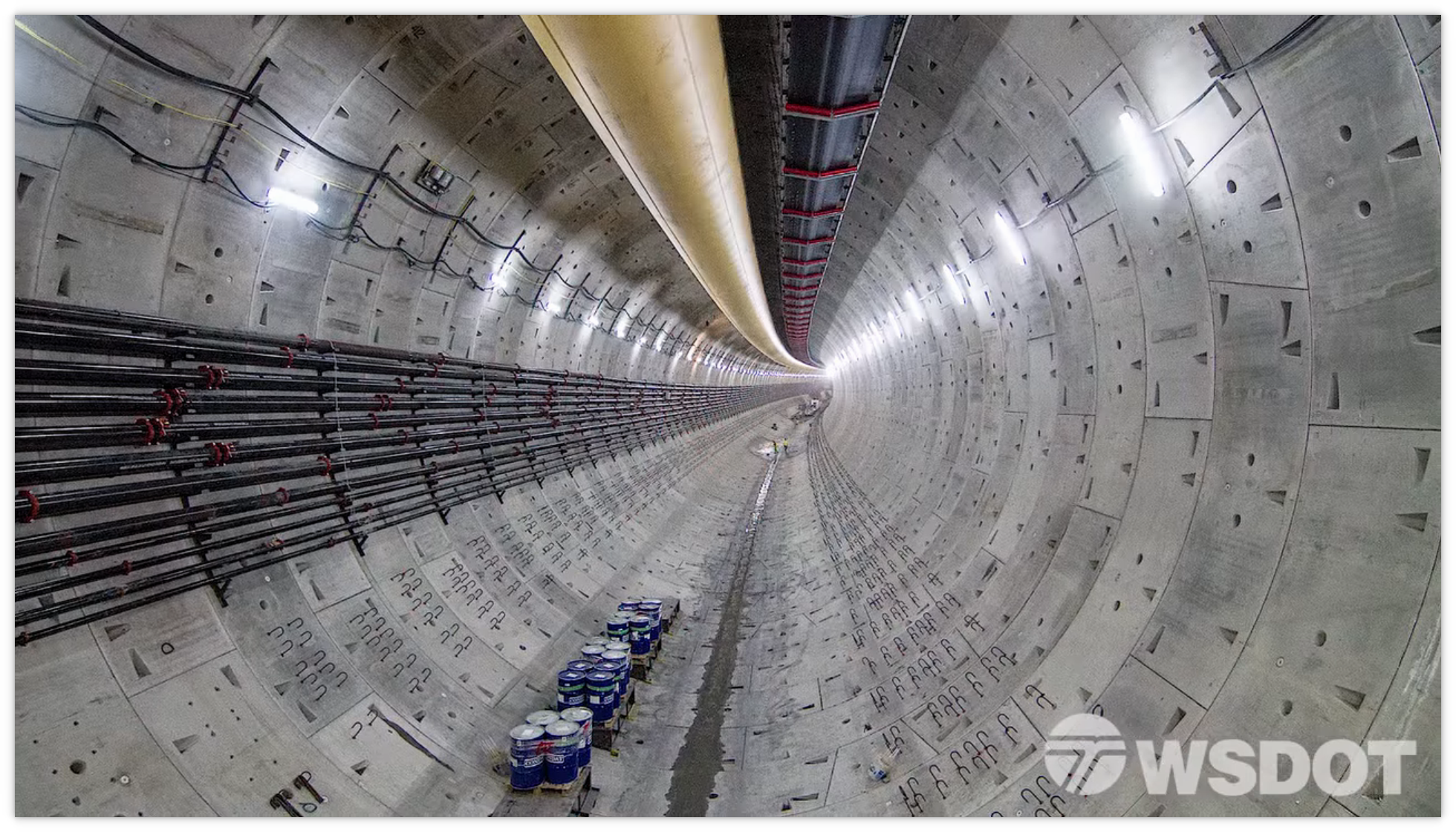In the autumn of 2005, with the November general election just days away, representatives of the Northwest Progressive Institute stood on the 1st Avenue South ramp to the Alaskan Way Viaduct to make the case against John Carlson and Kirby Wilbur’s Initiative 912, which would have wiped out funding to replace the viaduct. Our “Viaduct Hazard Demonstration” made the nightly news, and KIRO7 even provided aerial footage to go along with their story.
Over eleven years later, we are finally about to tear down what is left of the Alaskan Way Viaduct, with its replacement tunnel due to open in just a few weeks. (The southern portion of the structure was demolished in 2011.)

WSDOT has appropriately released a new video that explains how the new deep bore tunnel is designed to withstand earthquakes and why the tunnel is actually a place you’d want to be if The Big One shook Seattle.
It may sound counterintuitive, but a tunnel like the one that will soon carry SR 99 underneath downtown is actually the best place to be in an earthquake.
And that’s because tunnels move with the earth.
WSDOT has been trying to explain this concept to the public and the media for years, but unfortunately it hasn’t become as commonly understood as it should be. I’m lucky: I got a firsthand explanation decades ago, during my time in Scouting.
That explanation came during a guided tour of the I‑90 Mount Baker Tunnels, when I got to see the operations center and the work WSDOT does behind the scenes to keep the facility running. What I most remember about that tour is the engineer explain how tunnels are earthquake-resistant structures. Were there to be a quake, he said, the Mount Baker Tunnels are where he’d want to be.
I marveled at this knowledge and never forgot it.
WSDOT wants all Washingtonians to have a better understanding of why certain facilities (like the new SR 99 tunnel, one of many tunnels in Seattle) perform better in quakes than others (like old bridges).
So they made this video, which opens with footage of the 1989 Loma Prieta earthquake in California, which caused the collapse of the Cypress Street Viaduct.
It’s really well done, and I hope you’ll take a few minutes to watch it today.
This Friday will be the last day that the Alaskan Way Viaduct is open to traffic. After that, the viaduct will be taken out of service. The tunnel will open a few weeks later, barring any problems or delays with reconfiguring the new ramps.


Aren’t paradoxes grand?